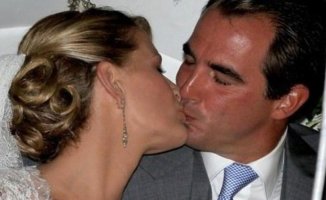There was a moment, at the end of the Franco regime, in Barcelona, when suddenly almost everything was possible. It was a fleeting moment, two lights between the decline of the regime and the arrival of democracy. The old rules were falling into disuse, due to lack of acceptance, and the new ones were not yet written. The result was the abolition of routine, the subversion of normality. We were not aware of the privilege that this entailed, of the freedom that we had at our fingertips, or it took us a while to become so, and when we realized it, that moment had already passed. But while it lasted, things happened that today would be unthinkable.
The exhibition that, until October 5, can be seen at the Espais Volart in Barcelona, Homage to Picasso, Vallauris 1972, narrates one of them. It is a story that can only be understood in that historical context, and not only because of the agony of Francoism and the spaces of uncertainty that suddenly opened up, but also because these were times of change everywhere. Those were the years of the pill and the miniskirt, of the Beatles and the Rolling Stones, of the first student revolts, of Make love not war. They were a few years in which being young –and consequently inexperienced– was not an obstacle; on the contrary, it was an advantage. All people over thirty were suspects; if they didn't want to be cornered, they had to prove their innocence.
The protagonist of the story narrated by this exhibition was a brother of mine, the second of the ten that we are. His artistic name is Santiago Palet –it is the one he chose when he began to paint, taking our second surname instead of the Spanishized Casajuana–, and he was twenty years old, three years older than me. He was the artistic director of a small art gallery, the Picasso Workshop, located on the ground floor of Calle de la Plata where the painter had his first workshop in Barcelona, and one night in November 1971 an extreme right-wing commando burned. It was an attack against the figure of Picasso, a symbol of freedom in exile, and one more link in a chain of acts of vandalism against centers related to the anti-Franco resistance. The attack against the Theo gallery in Madrid had just taken place and two days later there was another against the Cinc de Oros bookstore.
For more than thirty years, the only thing the victims of fascism could do was lower their heads and be silent. My brother did not accept it. This was the merit of him. There were still four years left for the dictator to pass peacefully to a better life; in theory, the repressive regime was operating at full capacity; but inside it was rotten. Instead of resigning himself to the role of victim, Santiago Palet organized a movement to make amends to Picasso. It was a way of becoming an accuser. Neither short nor lazy, he ordered hundreds of rugs from a nunnery and sent them to all the artists and intellectuals who crossed his mind, asking them to participate in an act of response to that attack with some small work executed on those rugs, that could be sent by mail and thus circumvent censorship.
The surprise, which today would have been very difficult to imagine, is that almost all the artists and creators to whom he asked sent him the rugs in question with drawings, paintings or texts supporting Picasso by return mail. In a very short time, he collected more than four hundred mats signed by the most prestigious artists of the moment and exhibited them in Vallauris, very close to where Picasso lived (in Spain it was impossible). Everyone wanted to collaborate and everyone wanted the protest not to be limited to the usual four names but to have as many people collaborate as possible.
I vaguely remember those days. In my very poor high school English, I wrote a letter to Agatha Christie (which, as can be seen in the exhibit from her response, was unsuccessful). My brother made us laugh by explaining to us how he had managed to talk to Salvador Dalí and proudly showed us the rugs that were arriving. “Look, this one by Rafael Alberti. Don't you know who Alberti is? We had no idea, of course, nor were we aware of the colossal cut of the sleeves to the regime that he was organizing.
It was a time of great cultural effervescence. It was the Barcelona of the twenty years of Joan Manuel Serrat, the Barcelona of Espriu, Ferrater and Pere Quart, but also that of Pijoaparte, García Márquez and Gil de Biedma, the Barcelona that the Seix Barral publishing house turned into capital of literature in the Castilian language, that of Tàpies and Brossa, that of Terenci Moix and Ocaña.
The collection is a curious portrait of the world of artistic creation of those days. The list of participants is astonishing: Joan Miró, Antoni Tàpies, Equipo Crónica, Modest Cuixart, Eduardo Chillida, Juan Genovés, Josep Guinovart, Albert Ràfols-Casamada, Benjamín Palencia, Antonio Saura, Alexander Calder, Victor Vasarely, Ernesto Treccani, Joan Brossa , Pau Casals, Buero Vallejo, Pablo Neruda… Where did you get the addresses from? How did he manage to talk to each other? How could he put together a campaign of that magnitude?
Everything is forgotten; time erases everything. Thanks to the effort of Nadia Hernández Henche and the good work of Àlex Susanna, the Vila Casas Foundation, gathering and exhibiting the rugs, which had been dispersed, as well as offering us a very peculiar vision of the artistic panorama of the early seventies , has preserved the memory of that act of resistance orchestrated by a twenty-year-old gallery owner.
It is a story that says a lot about the strange nature of those days: repression, rebellion, mobilization, artistic drive, generosity. Barcelona was losing fear.













